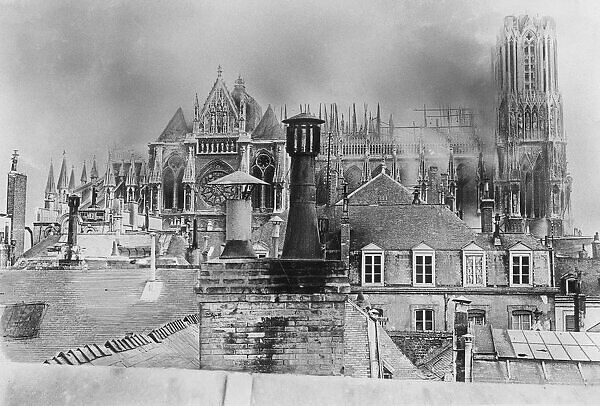The Gargoyles of Reims
December 10, 2022 Cyprien Gaillard War History David McCullough
 Cyprien Gaillard, Gargouille crachant du plomb (Gargoyle spitting lead)
Cyprien Gaillard, Gargouille crachant du plomb (Gargoyle spitting lead)
Ostensibly, Cyprien Gaillard’s exhibit Humpty/Dumpty at Palais Tokyo in Paris is about how things, once broken, cannot be put back together. But it’s also about the unintended side-effects a disturbance can have—the long shadow of a single decision, if you will.
Since seeing it last month, I keep thinking about one of the first exhibits of the show, a set of suspended gargoyles with lead pouring out of their mouths. Here’s the description from the museum:
Stone creatures float in the room. These gargoyles, survivors of the Notre-Dame de Reims cathedral, are like mineral ghosts. Thick lead flows from their mouths, a kind of reflux spewing forth from the architecture.
These gargoyles were created between 1861 and 1873 during the restoration work undertaken by Lugène Viollet-le-Duc to restore the cathedral to its twelfth-century appearance. They were severely damaged on 19 September 1914 when German shelling caused a fire to the wooden scaffolding of the restoration site. The buildings lead frame liquified in the heat of the fire, leaking into the gutters and through the gargoyles mouths.
There’s something unique about this memorial of the war, much more visceral than a destroyed building: The molten lead, frozen in place seems to freeze time itself; the absurd artifact drives home Gaillard’s intent to show the ripple effects of a single event.
 Reims Cathedral after the fire.
Reims Cathedral after the fire.
Maybe it’s better to think of history not just a series of events, but as a cascade of decisions1, of interlocking circumstances and individual fates that slowly unfold over time. These gargoyles don’t just embody that cascade, they show us a brief moment in the middle of it, with history flowing in both directions.
A few weeks after publishing this, the historian David McCullough died and in one his obituaries I found a quote of his that perfectly encapsulates this aspect of history: “Writing history or biography, you must remember that nothing was ever on a track. Things could have gone any way at any point. As soon as you say ‘was,’ it seems to fix an event in the past. But nobody ever lived in the past, only in the present. The difference is that it was their present. They were just as alive and full of ambition, fear, hope, all the emotions of life. And just like us, they didn’t know how it would all turn out. The challenge is to get the reader beyond thinking that things had to be the way they turned out and to see the range of possibilities of how it could have been otherwise.”↩︎